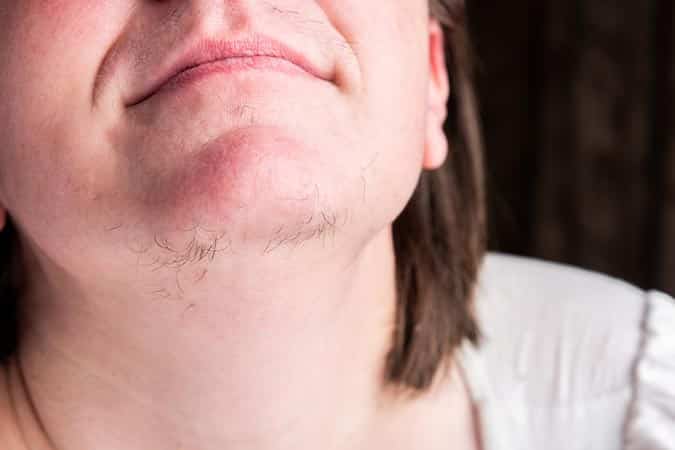What is Hirsutism?
Hirsutism is a condition that causes excessive growth of dark, coarse hair on the face, chest, and back in women. This hair growth is usually the result of excess male hormones (androgens).
When high androgen levels cause hirsutism, other signs may also develop over time, called virilization. These signs include:
- Stiff or dark body hair on the face, chest, lower abdomen, inner thighs, and back
- Deepening voice
- Balding
- Acne
- Increased muscle mass
- Decreased muscle size
Hirsutism may also be caused by a number of conditions and factors, including polycystic ovary syndrome (PCOS), Cushing syndrome, congenital adrenal hyperplasia, tumors, or certain medications. Those with a family history of hirsutism or those who are obese may be at a higher risk.
Who is a Good Candidate for Hirsutism Treatment?
Women with thick, dark, unwanted hair on their bodies can benefit from treatment. It is important to tell your dermatologist if you are also experiencing any of the symptoms of virilization, listed above. A consultation is needed to properly diagnose and treat your hirsutism for the best results.
What to Expect During Hirsutism Treatment?
For women with no sign of endocrine disorder, treatment of hirsutism is not necessary. However, for women who do seek treatment, it may involve treating underlying disorders and trying various medications or therapies. treatment options include:
- Oral contraceptives: Birth control pills or other hormonal contraceptives that contain progestin and estrogen can treat hirsutism caused by androgen production.
- Anti-androgens: These drugs stop androgens from attaching to their receptors in the body. Sometimes, they are prescribed after six months on oral contraceptives if the contraceptives are not effective alone.
- Topical cream: Prescription creams such as eflornithine (Vaniqa) are made specifically to treat excessive facial hair in women.
- Laser therapy: Hair removal laser therapy with the GentleLase Pro can be used to treat excessive hair growth. Multiple treatment sessions are needed for the best results.
- Electrolysis: This involves inserting a small needle into each hair follicle, destroying the follicle. Multiple treatments may be needed for results.
Certain self-care methods may temporarily remove or reduce the look of unwanted facial or body hair these include plucking, threading, shaving, waxing, depilation, and bleaching.
Following Hirsutism Treatment
Following hirsutism treatment, patients should notice less hair growth and less noticeable hair on their face and/or body. Multiple treatment sessions may be required for the best outcomes, and multiple treatment techniques may be used. Your dermatologist will provide you with information regarding how to properly care for your skin following treatment.
Schedule a Consultation
If you are a woman who is bothered by dark, thick hair on your face or body, contact our office today to learn more about hirsutism treatment options. Your first step is to schedule a consultation, during which your dermatology professional will assess your symptoms, diagnose you, and create a treatment plan to help you look and feel your best.

Get Started With A Visit!
Fill out the form below and we will reach out to you shortly to schedule an appointment.